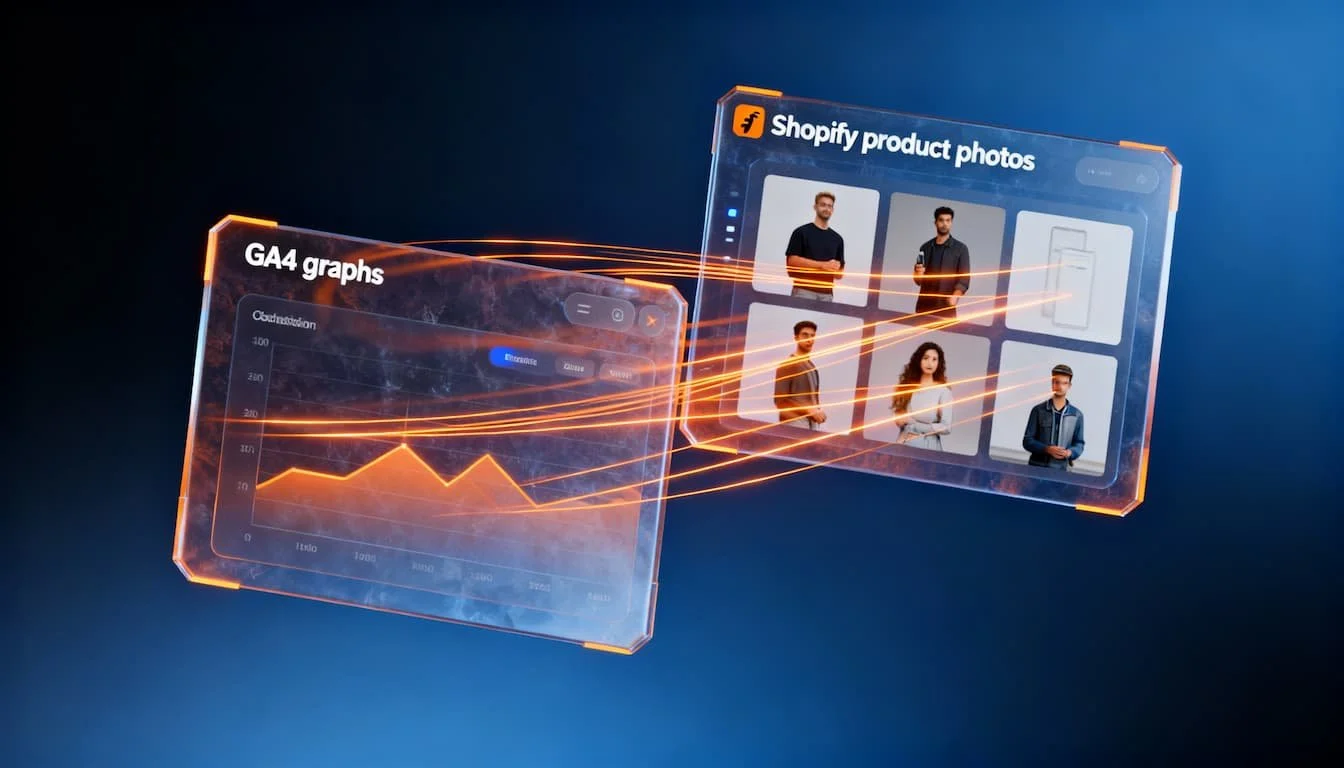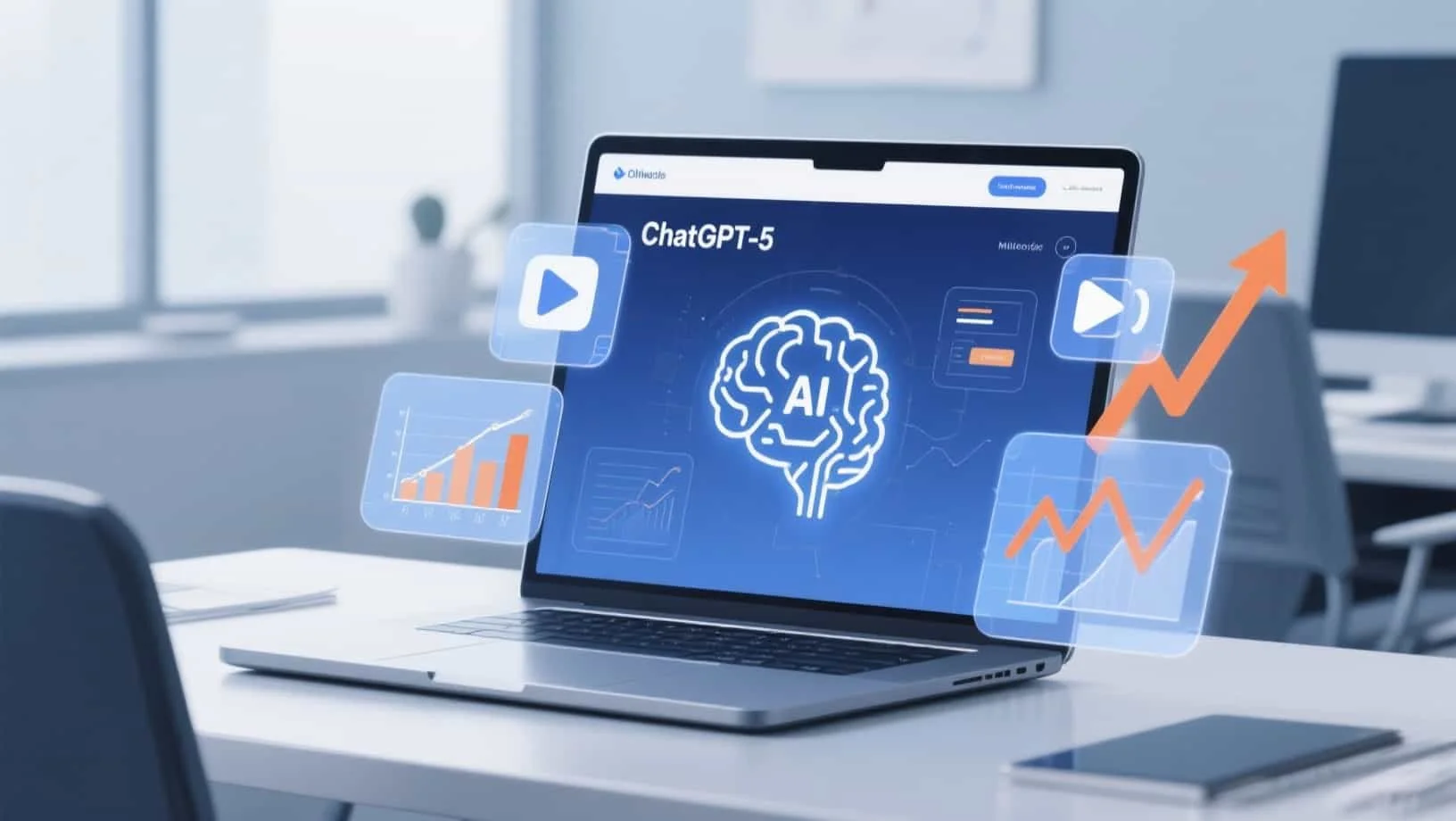Performance marketing explained: how to only pay for results
Performance marketing revolutionizes how companies advertise by only paying for achieved results. While traditional marketing often wastes money on visibility without guarantees, performance marketing ensures that every euro directly contributes to your growth. In an age where AI performance marketing is transforming, this results-oriented approach becomes crucial for smart entrepreneurs.
- Pay only for results: Performance marketing means paying for clicks, leads, or purchases, not for visibility
- 6 effective channels: Social media ads, Google/Bing Ads, influencer marketing, native advertising, affiliate marketing, programmatic ads
- Crucial metrics: CPC, CPL, CPA, CAC, CLTV, ROAS for campaign optimization and ROI measurement
- Cost-effective and measurable: Direct insight into performance, precise targeting, flexible and scalable
- Test budget €500-1000: A good starting point for SMEs to measure results and scale up
- Affiliate marketing component: External partners promote products for a performance fee, increasing reach without upfront investment
What exactly is performance marketing?
Performance marketing is digital advertising where you only pay when a desired action occurs: a click, lead, sale, or registration. Instead of paying upfront for impressions as with traditional advertising, actual performance determines your costs.
This form of marketing combines advanced tracking, real-time optimization, and data-driven decisions. Popular platforms include Google Ads, Meta Ads (Facebook & Instagram), LinkedIn Ads, and programmatic advertising networks.
“Performance marketing is the democratization of advertising - you only pay for proven, measurable results.”
Source: Neil Patel Blog - What Is Performance Marketing
Performance marketing versus traditional advertising
Traditional marketing: You pay for visibility (TV spots, radio, banners) without a guarantee of results. Think of John Wanamaker's famous quote: "Half of my advertising budget is wasted money; I just don't know which half."
Performance marketing: Every amount you invest is linked to a measurable action. You know exactly which campaigns work and why. This makes performance marketing perfect for SMEs that want to grow efficiently.
Brand marketing versus performance marketing: Brand marketing builds awareness in the long term, performance marketing generates direct results. The smartest companies combine both strategies for maximum impact.
Key benefits of performance marketing for growing companies
Complete cost efficiency
Pay only for results that move your business forward. No money wasted on meaningless impressions or irrelevant clicks.
Real-time optimization
Adjust campaigns directly based on performance. Modern analytics tools provide instant insight into what works and what doesn't.
Precise targeting
Reach potential customers at the exact moment they show interest. Performance marketing offers targeting based on behavior, demographics, interests, and search intent.
Tailored scalability
Start small with test budgets and scale up successful campaigns. Perfect for companies that want to invest cautiously and grow based on proven results.
Measurable ROI
Every euro you invest is traceable to the final conversion. This transparent nature makes performance marketing attractive to SMEs with limited budgets.
Essential performance marketing channels for 2025
Google Ads: the powerhouse of search engine marketing
Google Ads remains the most effective performance marketing channel, especially for commercial searches. With search ads, you appear exactly when potential customers are searching for your product.
Benefits: High purchase intent, direct results, excellent targeting Best for: E-commerce, local services, B2B lead generation
Meta Ads: visual storytelling that converts
Facebook and Instagram Ads excel at reaching specific target groups through detailed targeting. Visual content performs excellently here.
Benefits: Rich targeting options, large reach, strong retargeting possibilities Best for: Lifestyle brands, e-commerce, community building
LinkedIn Ads: the B2B performance platform
For companies targeting other companies, LinkedIn offers unique opportunities. LinkedIn marketing strategies can deliver powerful B2B lead generation.
Benefits: Professional targeting, high-quality leads, reaching decision-makers Best for: B2B services, consultancy, software companies
Programmatic advertising: automated precision
Programmatic advertising automatically buys ad space via algorithms, allowing you to target thousands of websites simultaneously with precise interest groups.
Benefits: Enormous scale, advanced targeting, efficiency Disadvantages: More complex setup, requires expertise
Native advertising: content that converts
Sponsored articles and content that feels natural within the media where they appear. Excellent for brand building combined with direct conversions.
Affiliate marketing: partners who sell
External partners promote your product or service and only receive compensation for successful sales or leads. Risk-free expansion of your sales team.
“The power of performance marketing lies in real-time optimization - you can adjust your campaigns within hours based on data.”
Source: WordStream - Performance Marketing Guide
Critical metrics that determine your success
Cost per Click (CPC)
The average cost per click on your ads. Low CPC means efficient targeting and attractive ad copy.
Cost per Acquisition (CPA)
The total cost to acquire one new customer. This is your most important KPI for performance marketing success.
Return on Ad Spend (ROAS)
For every euro spent on advertising, how much revenue do you generate? A ROAS of 4:1 means €4 revenue per €1 spent.
Customer Lifetime Value (CLV)
The total value a customer generates during their relationship with your company. Essential for long-term performance planning.
Conversion Rate
The percentage of visitors who perform the desired action. Higher conversion rates directly reduce your CPA.
Optimize these metrics systematically through continuous testing and refinement of your campaigns.
“AI is changing performance marketing from reactive to predictive - we can now predict which campaigns will succeed.”
Source: Search Engine Land - AI in Performance Marketing
Building a performance marketing strategy: step-by-step
1. Define clear objectives
Determine what you want to achieve: leads, sales, registrations, or downloads. Specific goals lead to targeted campaigns and better measurable results.
2. Analyze your target audience thoroughly
Understand who your ideal customers are, where they are active online, and what drives their buying behavior. Customer journey mapping is crucial in this.
3. Select the right channels
Choose platforms where your target audience is active and that fit your budget. Start with 1-2 channels and expand as your expertise grows.
4. Implement robust tracking
Ensure accurate conversion tracking via Google Analytics, Facebook Pixel, and platform-specific tracking tools. Without solid data, you cannot optimize.
5. Start with test budgets
Start with small budgets to optimize your campaigns. Only increase investments for proven successful campaigns.
6. Continuously optimize
Performance marketing requires constant attention. Test different ad copy, visuals, targeting, and landing pages to improve performance.
Avoiding common mistakes
Lack of a testing culture: Many companies launch campaigns without A/B tests. Always test different versions of ad copy, visuals, and targeting.
Insufficient tracking: Incomplete or incorrect conversion tracking leads to wrong optimization decisions. Invest time in correct setup.
Scaling too quickly: Only increase budgets after campaigns consistently perform well. Rapid scaling of poor campaigns wastes money.
Ignoring landing page quality: Even the best ads fail with poor landing pages. Conversion rate optimization is crucial for performance marketing success.
Focusing on the wrong metrics: CPC and CTR are interesting, but ultimately only ROI and customer acquisition costs count.
AI and automation in performance marketing
Performance marketing is rapidly evolving through AI integration. Machine learning algorithms optimize bidding, predict conversion opportunities, and personalize ad content automatically.
Smart Bidding strategies in Google Ads use machine learning to adjust bids in real-time for optimal performance. Dynamic product ads on Facebook automatically show relevant products to potential buyers.
The future lies in AI-driven performance marketing, where human strategic input is combined with machine precision to maximize results. SEO also remains crucial for organic visibility alongside paid campaigns.
“Attribution modeling in performance marketing often reveals that 40% of conversions come from touchpoints we previously ignored.”
Source: Adalysis - Attribution Modeling Complete Guide
Budget planning for SMEs
Determining a starting budget: For new campaigns, we recommend €500-1000 per month per channel. This provides sufficient data for optimization without great risk.
Platform distribution: Don't distribute your budget equally across all channels. Start with one platform and scale successful campaigns before diversifying.
Seasonal planning: Plan budget increases during peak periods and reduce them during quiet months. E-commerce businesses often increase budgets for Black Friday and Christmas. Local businesses often combine performance marketing with local SEO for maximum reach.
ROI benchmarks: General ROAS benchmarks vary per industry, but 3:1 to 5:1 are healthy targets for most companies.
Performance marketing tools you need
Campaign management:
Google Ads Editor for bulk edits
Facebook Ads Manager for Meta campaigns
Microsoft Advertising for Bing ads
Analytics and tracking:
Google Analytics 4 for website performance
Google Tag Manager for tracking implementation
Hotjar for user experience insights
Automation and optimization:
Optmyzr for automated bid management
Adalysis for ad testing and optimization
Supermetrics for data consolidation
ClickForest's performance marketing services combine these tools with expertise for optimal campaign performance.
“Performance marketing works best when you test, measure, learn, and scale - not when you guess and hope for results.”
Source: Moz Blog - Performance Marketing Best Practices
Future of performance marketing
Performance marketing is becoming increasingly sophisticated due to AI, privacy changes, and new platforms. Cookieless tracking requires first-party data strategies. Voice search optimization is becoming more important as smart speakers become more popular.
Augmented reality ads on platforms like Snapchat and Instagram offer new creative possibilities. Connected TV advertising offers TV reach with digital targeting precision.
The companies that invest now in modern performance marketing strategies and AI integration are building competitive advantages for the future.
Conclusion: performance marketing as a growth engine
Performance marketing offers SMEs an effective way to grow without wasting money on ineffective advertising. By only paying for results, you get maximum value from your marketing budget.
Success does require strategic planning, correct tool setup, and continuous optimization. Start small, test frequently, and scale proven successful campaigns. With the right approach, performance marketing becomes your strongest growth engine.
Ready to get started with performance marketing? Schedule a no-obligation strategy session with our team and discover how performance marketing can grow your business.

🚀 More leads, higher conversion, better ROI
This article gave you insights. Now it's time for action. Whether you want to build a profitable webshop, generate more revenue from performance marketing or SEO, or grow with AI-marketing - we'll help you move forward concretely.
💬 Discuss your challenge directly with Frederiek: Schedule a free strategy session or send us a message
📧 Prefer to email? Send your question to frederiek@clickforest.com or call +32 473 84 66 27
Strategy without action remains theory. Let's take your next step together.
Frequently asked questions about performance marketing
-
Performance marketing means you only pay when someone performs a specific action (click, purchase, registration). With traditional advertising, you pay for visibility without a guarantee of results.
-
For SMEs, we recommend starting with €500-€1000 per month. This provides enough data to optimize campaigns and test scalability.
-
Cost per Acquisition (CPA), Return on Ad Spend (ROAS), and Customer Lifetime Value (CLV) are the core metrics. These directly show the profitability of your campaigns.
-
Initial results are often visible within 24-48 hours. For reliable optimization data, we recommend at least 2-4 weeks of testing per campaign.
-
Performance marketing works excellently for companies with clear conversion actions: e-commerce, lead generation, SaaS, and service provision. B2B companies also achieve strong results.
-
Google Ads offers the highest purchase intent, Meta Ads (Facebook/Instagram) excel in targeting and visual storytelling, and LinkedIn Ads are perfect for B2B. The choice depends on your target audience and product.
-
You can start simple campaigns yourself, but expertise helps enormously for optimal results and efficiency. Performance marketing requires continuous optimization and technical knowledge.
-
Start with small budgets, implement accurate tracking, test different variations, and only optimize campaigns with proven results. Focus on metrics that directly contribute to your business goals.
-
Programmatic advertising automatically buys ad space via algorithms on thousands of websites. It offers great scale and advanced targeting but requires more technical expertise.
-
Primarily measure ROI via metrics such as ROAS and CPA. Secondary metrics such as CTR and conversion rates help with optimization. Focus on business impact, not just marketing metrics.
Sources and references
Performance marketing statistics and ROI:
Firework: "Marketing ROI statistics: 30+ stats to boost your strategy in 2024" - https://firework.com/blog/marketing-roi-statistics
WordStream: "180+ powerful digital marketing statistics for 2025" - https://www.wordstream.com/blog/ws/2022/04/19/digital-marketing-statistics
HubSpot: "2025 marketing statistics, trends and data" - https://www.hubspot.com/marketing-statistics
Affiliate marketing trends and performance:
Authority Hacker: "136 affiliate marketing statistics in 2025" - https://www.authorityhacker.com/affiliate-marketing-statistics/
Publift: "Affiliate marketing statistics of 2025" - https://www.publift.com/blog/affiliate-marketing-statistics
Statista: "Affiliate marketing spending US 2023-2028" - https://www.statista.com/statistics/693438/affiliate-marketing-spending/
Google Ads performance and programmatic advertising:
WordStream: "Google Ads benchmarks 2025: competitive data for every industry" - https://www.wordstream.com/blog/2025-google-ads-benchmarks
Basis Technologies: "2025 programmatic advertising trends to know" - https://basis.com/blog/2025-programmatic-advertising-trends-to-know











